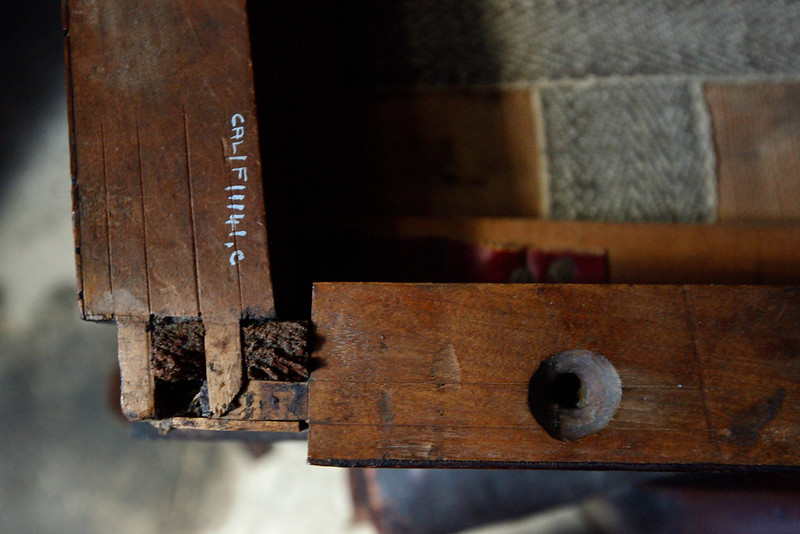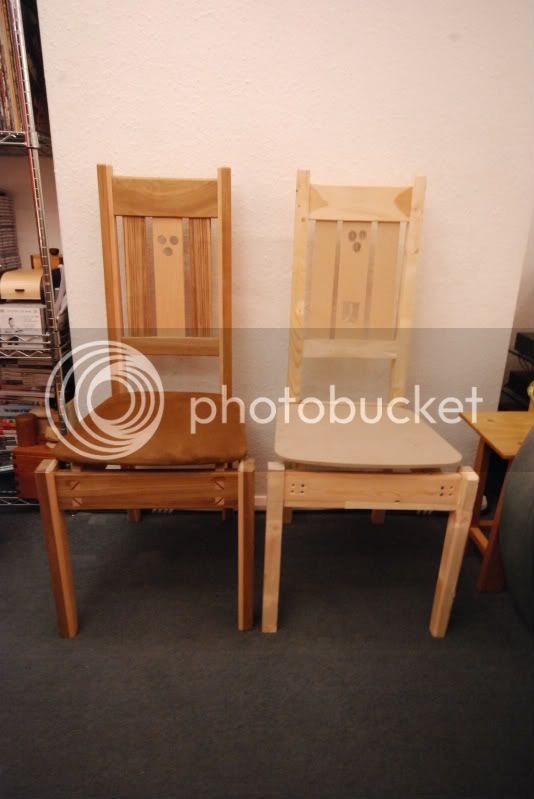Inkdchippie
Member
So the time has come.... My commitment to attempting a chair build is now at the point of no return :shock:
I'm a fan of clean, contemporary lines and after trawling the old interweb, a David Savage design, named "Swinger" is my inspiration. As my account is new I'm unable to post links to the design.
Chosen for it's "simple" appearance, it seemed like a good place to start for my first pair of chairs (the base section at least!!!!) I would love to conquer the shaped back rest, but for now the base is where my journey begins.
Like "Swinger", my material of choice is Sycamore. I've already dimensioned the material for the legs, with current dims of 480mm x 42mm x 42mm.
I've set out a 1:1 template on plywood in plan view for the seat. Unfortunatley I don't have the dimensions with me as I write this post. The seat profile narrows from front to back in plan view. I've also decided to include a 1.5 degree decline on the seat from front to back. The rail width I feel best compliments the aesthetics is 60mm (the rails haven't been machined yet) This is where my problems begin.
I have 2 points where I am struggling, and would really appreciate some feedback as to the best way to move this project forward.
1. The thickness I should finish the 4 rails on the seat base. Should I match the rail thickness to the 42mm x 42mm leg dimensions? Or. Going thinner with the stock, perhaps as thin as ex 1" boards, keeping the outer face of the rails flush with the outside faces of the legs? While the latter option will allow for longer tenons into the legs, they will be offset from centre. Will this lead to potential problems with weakness in the leg material or concerns of any twisting and the risk of the joint opening up where the tenon shoulder meets the leg.
2. Which method to adopt to fix the seat base down to the frame. I plan to use birch ply for the base, which will be upholstered in a material yet to be decided.
My research so far has found 2 approaches. The first which I'm not a fan of, is to attach a bearers (4 in total) mounted at 45deg across the inside corner of each leg. The second (which I'm thinking will have a direct relationship to the rail thickness) is to rebate all the rails on the inside of the seat frame, providing a surface to sit the ply base on.
Any wisdom on executing the seat back would also be welcome. But for now the seat frame is the first phase of this project.
Any advice on how to approach this would be greatly appreciated.
Many thanks in advance...
PS. Mods? Wasn't sure where to post, here or in design?? Apologies if I've got it wrong
I'm a fan of clean, contemporary lines and after trawling the old interweb, a David Savage design, named "Swinger" is my inspiration. As my account is new I'm unable to post links to the design.
Chosen for it's "simple" appearance, it seemed like a good place to start for my first pair of chairs (the base section at least!!!!) I would love to conquer the shaped back rest, but for now the base is where my journey begins.
Like "Swinger", my material of choice is Sycamore. I've already dimensioned the material for the legs, with current dims of 480mm x 42mm x 42mm.
I've set out a 1:1 template on plywood in plan view for the seat. Unfortunatley I don't have the dimensions with me as I write this post. The seat profile narrows from front to back in plan view. I've also decided to include a 1.5 degree decline on the seat from front to back. The rail width I feel best compliments the aesthetics is 60mm (the rails haven't been machined yet) This is where my problems begin.
I have 2 points where I am struggling, and would really appreciate some feedback as to the best way to move this project forward.
1. The thickness I should finish the 4 rails on the seat base. Should I match the rail thickness to the 42mm x 42mm leg dimensions? Or. Going thinner with the stock, perhaps as thin as ex 1" boards, keeping the outer face of the rails flush with the outside faces of the legs? While the latter option will allow for longer tenons into the legs, they will be offset from centre. Will this lead to potential problems with weakness in the leg material or concerns of any twisting and the risk of the joint opening up where the tenon shoulder meets the leg.
2. Which method to adopt to fix the seat base down to the frame. I plan to use birch ply for the base, which will be upholstered in a material yet to be decided.
My research so far has found 2 approaches. The first which I'm not a fan of, is to attach a bearers (4 in total) mounted at 45deg across the inside corner of each leg. The second (which I'm thinking will have a direct relationship to the rail thickness) is to rebate all the rails on the inside of the seat frame, providing a surface to sit the ply base on.
Any wisdom on executing the seat back would also be welcome. But for now the seat frame is the first phase of this project.
Any advice on how to approach this would be greatly appreciated.
Many thanks in advance...
PS. Mods? Wasn't sure where to post, here or in design?? Apologies if I've got it wrong




















